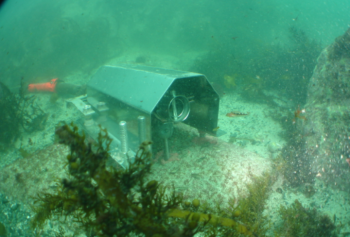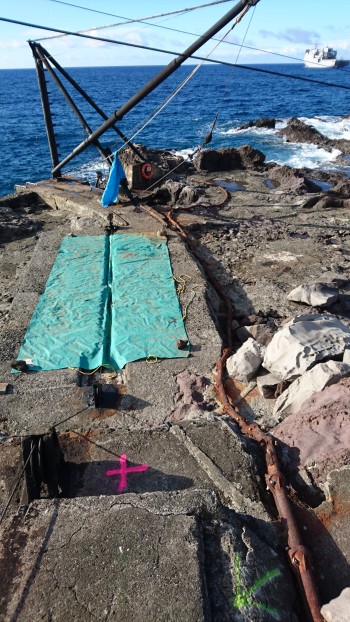
GeoNet teams return from successful trip to Raoul Island
HMNZS Canterbury returned to Auckland this morning after a successful voyage to the Kermadec Islands. On board are staff from GNS Science, DOC and NZ Met Service.
HMNZS Canterbury returned to Auckland this morning after a successful voyage to the Kermadec Islands. On board are staff from GNS Science, DOC and NZ Met Service. The GeoNet electronics team and three commercial divers have been upgrading and hardening one of the two tsunami gauge sites on the island, while volcano chemistry team have been sampling the volcano and geothermal features at Green Lake.
The tsunami sensors at Fishing Rock provide real-time sea level data as part of the LINZ tsunami network. GeoNet technician Kris O’Brien has reported over the weekend the two sensors at Fishing Rock were replaced with new sensors. The new installation is further along the shore platform and provides better protection from the sea. New cable armour which protects the fragile cable from the harsh conditions was installed, with part being re-routed to the new sensor location. The team also swapped out the satellite communications dish and replaced around 440 kg of batteries.
Dr Bruce Christenson has updated us on the gas and water sampling of springs and fumaroles in the Raoul Caldera. He has noted “overall the system is little-changed since September 2016, although water levels in Green Lake were lower”. The three main fumaroles were sampled as were the two crater lakes. They also sampled the springs in Marker Bay Pool and East Pool. The combination of fumarolic and pool gases, will provide some strong insights into the current hydrothermal system behavior, and provide constraints for modelling and monitoring future activity from the volcano. GNS Science also had a team visiting Curtis Island to undertake research on the hydrothermal features there.




